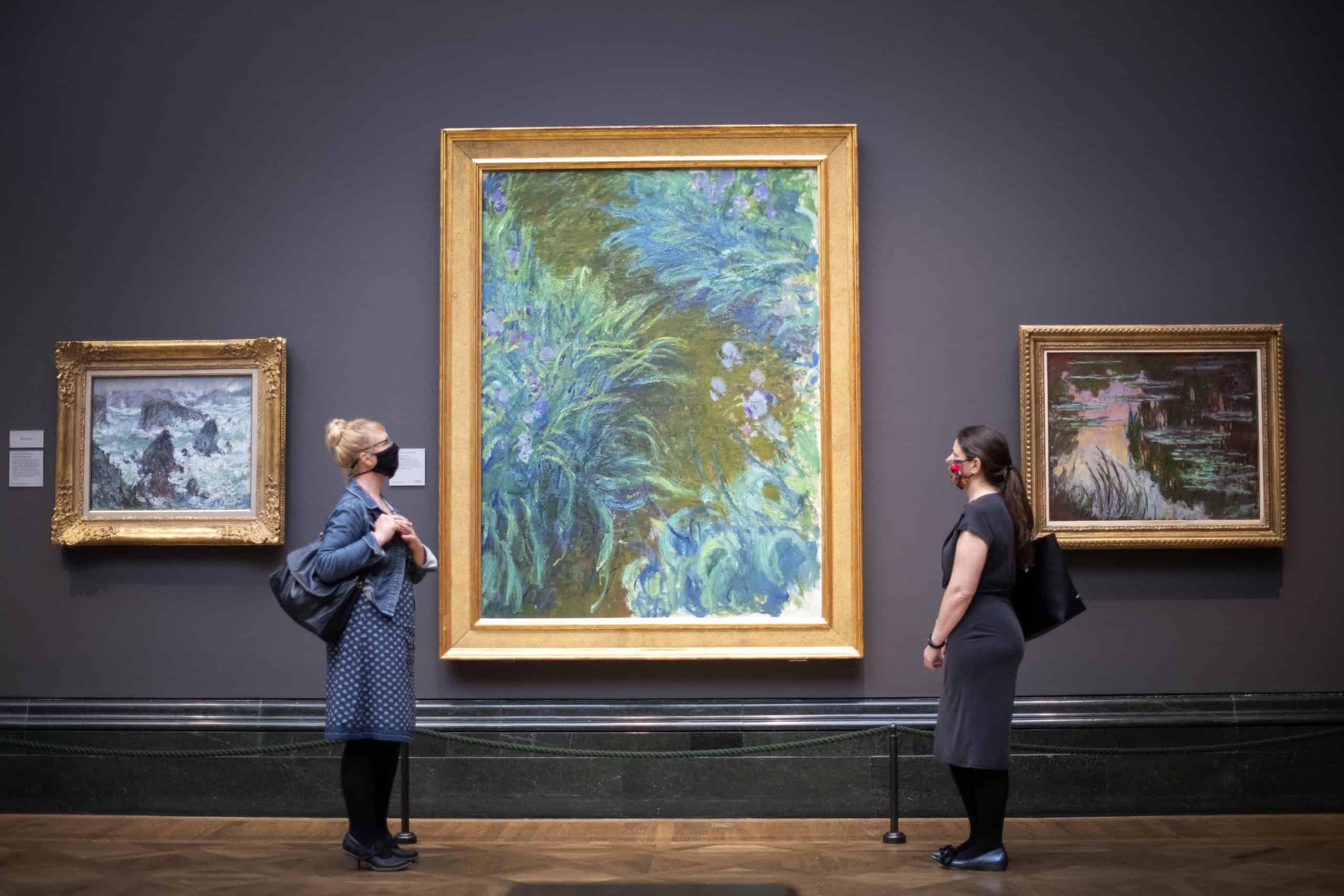
If a painting sits in a gallery but there’s nobody to see it, is it really there?
Thankfully such tiresome hypotheticals need be pondered no longer. The National Gallery threw open its doors to the public today, allowing enthusiasts the carefully regimented, ruthlessly sanitised, socially distant art experience they’ve been craving for months.
There are a few twists. Visits must be booked online and in advance, and the gallery’s vast collection has been divvied up into three one-way routes, delineated by white arrows on the floor.
At first thought the idea of being guided through a gallery by an invisible hand feels anathema to their very concept. What are galleries if not spaces to wander and take in art at one’s own pace, to sit in front of an obscure painting for 20 minutes by an artist you’ve never heard of and skip past an Old Master without second thought?
But really, I was glad of the direction. I enjoyed being told what to look at next, and I strode around Routes A, B and C with purpose, relishing the sense that there was a firm hand at the tiller.
Perhaps, I thought, I’ve been doing galleries wrong this whole time. Maybe I should buy the audio headset or go on a guided tour, and maybe I should follow the big white arrow instead of briefly making eyes at a Monet before heading for the gift shop.
Route A takes in Sienese diptychs and intricate ivory-carved psalters, the religious iconography of Duccio and Botticelli in the quiet of a half-full gallery lending it an eery church-like serenity. Route B journeys from Canaletto’s Venice to the England of Turner and Constable, while Route C takes in Rubens, Rembrandt, Monet and Van Gogh.
Whereas many have balked at the spectre of football without the fans or a spaced-out trip to the pub, being alone in a gallery – particularly one as grand and, usually, busy as the National Gallery – is an art lover’s dream.
There is no jostling to read a painting’s explainer, no unreasonably tall men blocking your view and strictly no selfies. It felt peaceful and safe. Staff seemed genuinely glad to be welcoming back punters, constantly thanking you for your custom and urging you to come back soon.
Nonetheless there were lessons to be earned. If, like me, you are blighted by shortsightedness then put in contact lenses. It’s very difficult to feel the full heft of Caravaggio’s chiaroscuro when your facemark has made your glasses steam up.
As for masks, they are not compulsory – but most visitors were wearing one. Some men – inevitably – opted out, choosing instead to don a gilet – invariably – and stand, wide-legged, pontificating about brush strokes to an audience of none. This may be a new normal, but some things will never change.
But any irritant was minor in the grand scheme of things, and the sight of an eager young boy dragging his dad from painting to painting marvelling at Turner’s Fighting Temeraire and Seurat’s bathers was enough to banish any ill-feeling.
Truly, it was a privilege to be back – and visitors should have been reminded of that privilege by the scenes that greeted them on arrival in Trafalgar Square.
Walking up from Charing Cross, a queue for food parcels stretched in front of the gallery. Beyond it, photographers were waiting to capture art lovers entering the gallery, their backs to those behind them. It was a timely reminder that, as we flock back to our galleries, bars and restaurants, so many remain without so much.
At its best, art is a sanctuary and, with the waters so choppy outside, that feeling is exacerbated. Wonderful though it is that Britain’s cultural institutions are once more opening their doors, gallery-goers would be well-served by remembering just how lucky they are.
Related: Dosh for nosh: All you need to know about Chancellor’s summer mini-Budget